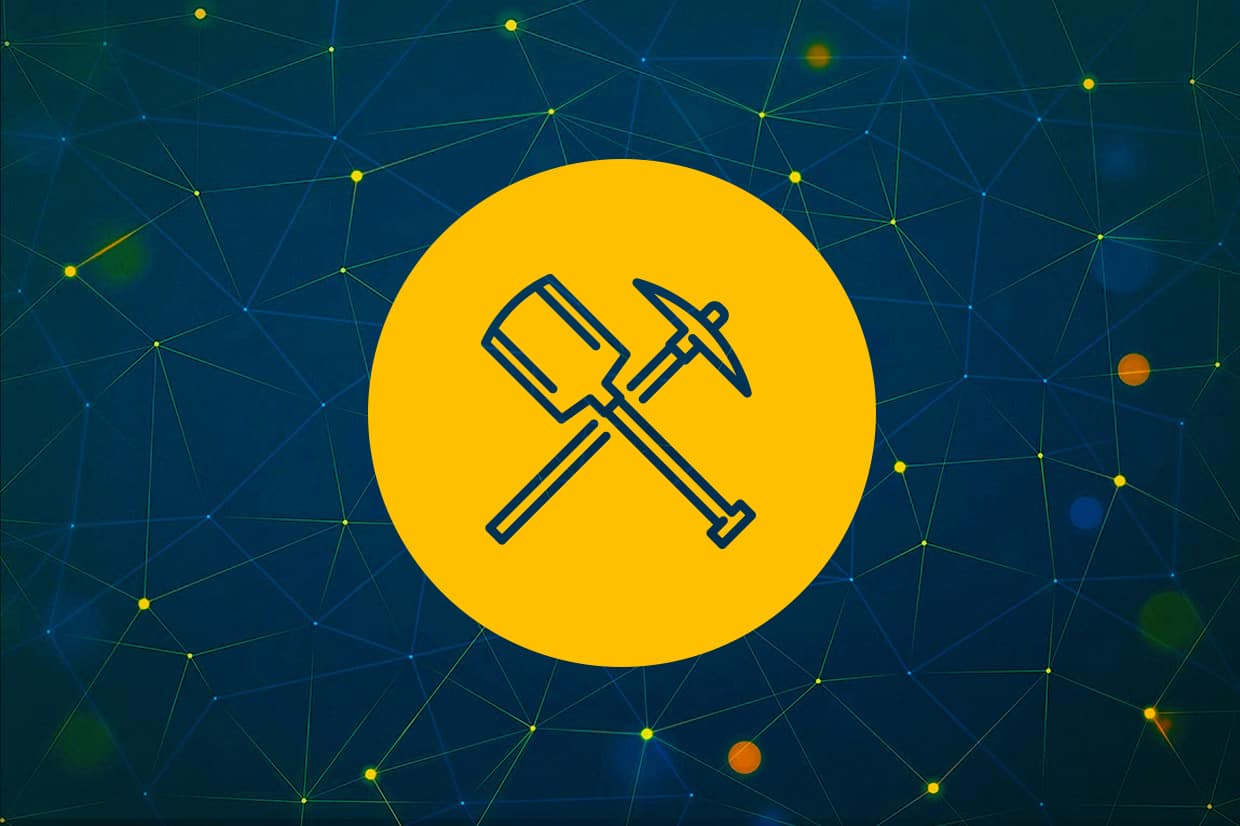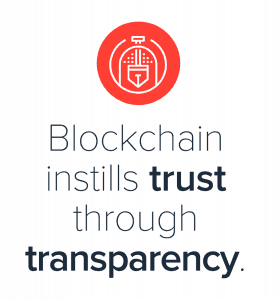
10 min read
How Blockchain Works on Trust
How Blockchain Works on Trust
This article explains how blockchain works and why it’s catching on in various industries around the world. Be sure to check out the blockchain glossary of terms at the end of the article.
Blockchain is a digital technology that’s been around since 2008. Invented by an anonymous genius, blockchain has been made famous in recent years by the mysterious and lucrative Bitcoin (priced at $14,783.43 US dollars as of January 9 this year–in case you’re interested in exchanging your yacht for one).
 Blockchain technology, however, has far more uses than simply powering Bitcoin. Industries worldwide are adopting it in the hopes of creating more secure and transparent business environments.
Blockchain technology, however, has far more uses than simply powering Bitcoin. Industries worldwide are adopting it in the hopes of creating more secure and transparent business environments.
At Praxent, we’re excited about the implications of this new technology. Our very own distributed-database enthusiast, Holly Gibson, gave us a rundown on how blockchain works beyond Bitcoin at our most recent learning luncheon.
How Blockchain Works
Blockchain technology tracks data using a distributed database. This means that multiple copies of the database are held in a peer-to-peer network of machines, each with equal access and authorization to the data.
It is a decentralized system–the machines belong to different owners and each one has the complete and up-to-date set of the data or transaction history.
Before a transaction can be approved and authenticated, all of the machines on the network have to be able to validate the source. So each machine on the network has the same exact copy of the database at all times. This redundancy prevents data loss and protects the integrity of the blockchain. If one copy gets corrupted, it is deleted and replaced with an uncorrupted sibling.
How Blockchain Works // Proof-of-Work Algorithm
Transactions are reconciled through “emergent” updates rather than at scheduled intervals. As a transaction is added it immediately gets sent out, instantaneously, instead of every hour or at a certain recurring time. New transactions are bundled into a block. Each block contains a block header. And every header contains at least three sets of metadata, including:
- Structured data about the transactions in the block
- The timestamp and data about the proof-of-work algorithm
- A reference to the parent block – that is, the previous block – via a “hash” (in other words, a cryptographic algorithm). This creates the “chain” part of the blockchain. Each block in the blockchain can be identified by a hash of its header.
The proof-of-work algorithm is the key to how blockchain works. It is the solution to the algorithm hash. The miners’ job is to find this solution (uncover the algorithm) in order to verify the validity of the transaction. Every miner and their machine on the network must uncover the same solution in order for the transaction to be valid.
To complete this task, each machine has to have the exact algorithm, encryption, and the public and private keys assigned to the transaction. If one of the machines cannot arrive at the solution that is contained in the header, the transaction is not approved or added to the block.
With Bitcoin, the whole process can take as little as 10 minutes. This includes the time it takes for a bitcoin transaction to be bundled into a block, then mined, verified, and authenticated. And of course, the sender must then be notified once the transaction is approved.
Sometimes the process can take longer depending on whether any of the networks wish to mine the transaction. Miners earn a fee for each transaction they mine. The larger that fee payment, the more likely it is a transaction will be picked up and mined.
The time it takes to complete the transaction process in other industries varies. Processing speeds depend on how blockchain works in each particular network and the method used for authenticating transactions.
How Blockchain Works // The Role of Miners
Think of miners like banks or credit card companies. They resemble a trusted third party that stands between the buyer and the seller, verifying that the transaction is valid and sure.
When miners input a given chunk of data into the cryptographic hash function, the result is a hash value. The hash value is an alphanumeric string of a specified length. Each new hash value contains information about all previous transactions.
With Bitcoin, miners on a network often compete with one another, each striving to be the first network that solves the unique, difficult math puzzle and earns the fee. They do this by generating trillions of hashes, each slightly different from the others, until they find one that works. They vary the hashes incrementally by adding a different nonce, which is simply a set of random numbers, to the data before each new calculation. Every time the nonce is changed, the algorithm puts out a completely unique hash.
Once the correct solution is identified, the “proof of work,” or the hash of that solution, is included in the block header. The hash in the block header is what allows the block to be verified. New data is added to the hash after each transaction, making the algorithm harder to crack as time goes on.
It is nearly impossible to change the details of a verified transaction. That’s how blockchain works so well. To do so, someone would have to create a completely different nonce that works for the transaction and every transaction that took place after it.
Blockchain Beyond Bitcoin: Disrupting an Industry Near You
With blockchain technology, people have a way to keep track of transactions and high-value assets, recording in a ledger every instance in which the asset undergoes a change of hands. This ledger of records is authenticated and not owned by a single source; rather, the database is open and distributed. Decentralized and transparent, blockchain ensures that all captured data remains secure and incorruptible.
With the distributed database, blockchain technology has the power to open up networks and strengthen economies. As we discussed blockchain at our meeting, team members voiced a variety of questions and opinions surrounding the mystery and promise of the technology.
In the words of our CEO, Tim Hamilton, “[Blockchain] instills trust through transparency.” The system requires all players involved to trust each other, not because they’re best buddies, but because all interactions in the supply chain are known and accounted for. Accountability is built into the system.
Clearly, blockchain is a revolutionary technology. The world is watching with curiosity as pioneering industries adopt the method, drawn by its promise of security and buyer confidence.
>> Could blockchain be the key to removing a bottleneck in your industry?
How Blockchain Works in The Diamond Industry
Everledger, creator of the blockchain registry for diamonds, carries the torch for a new era of security in one of the world’s most luxurious and controversial industries. With blockchain, every move of every registered diamond is tracked, along with all notable characteristics of the stone–like color, carat, and certificate number. When the diamond reaches a new point in the supply chain, buyers and merchants can verify the authenticity of the diamond.
The diamond industry is known for forgery and illegal activity. Counterfeit diamonds are extremely common yet nearly impossible to track down. Also common are false insurance claims on “lost” or “stolen” stones.
With blockchain, the real diamonds and the fake ones are easily identifiable. Buyers, insurers, and someday even retailers will be able to tell exactly from where each stone came.
How Blockchain Works in Food, Fine Wine, & Georgia
Blockchain makes a lot of sense for any industry that operates on inventory and supply chain. When a variety of players are involved in moving products from producer to consumer, blockchain can fill the need for more connected and trustworthy interactions.
Some up-and-coming uses for blockchain include the following:
- The Republic of Georgia has officially adopted blockchain as a way of documenting and verifying property titles. Now, real estate interactions in Georgia are recorded in a blockchain ledger, allowing citizens access to secure and indubitable proof of ownership.
- Major players in world food supply chains are uniting around blockchain. Their hope is to streamline and secure the data that accumulates as products move from farmer to consumer. Among other benefits, companies hope to reduce the cost of recalling contaminated food. Some farmers support the initiative, as blockchain would open the supply chain and provide access to wider markets.
- Everledger has disclosed plans to start tracking fine wine and fine art. Just like in the diamond industry, wine and art counterfeits are common and expensive, taking a toll on buyer confidence and industry health. The security and trust provided by blockchain could save the day for these high-risk trades.
>> Interested in incorporating blockchain into your next product design? With usability testing and data analysis, we’ll help you minimize risk and validate assumptions before you build.
Blockchain Glossary of Terms
Ledger
In blockchain, a ledger is a digital database that contains unalterable documentation on the movement of identifiable products or currencies.
Distributed Database
A distributed database holds multiple copies of the same exact data on a network of equally authorized machines owned by different entities. The opposite of a distributed database would be a central database where one owner holds all records of a given data set.
Block
A block is a digital record of verifiable transactions for a given product.
Miner
Miners are the people and their machines who test whether a transaction or product is authentic.
Hash
In blockchain technology, each block contains a reference to the block that came before it. The reference comes in the form of a hash, or a cryptographic algorithm.
Nonce
Miners combine the hash with the new transaction block, resulting in a string of data. They then generate possible solutions to the cryptographic algorithm by assigning different combinations of random numbers to the string of data. Each new random number, called a nonce, changes the outcome of the algorithm. The machines generate outcomes until they arrive at one that works.
Proof of Work
The proof of work is a piece of data proving that the item or transaction was authenticated the last time it was mined.
Blockchain
A blockchain is the compilation, or chain, of blocks that build upon each other each time a product changes hands or a new transaction occurs.


Leave a Reply